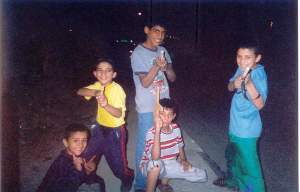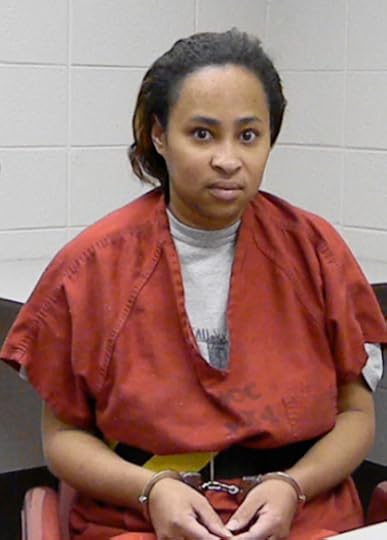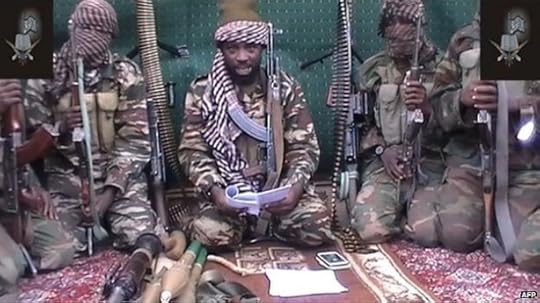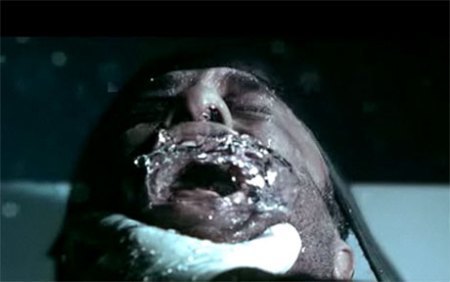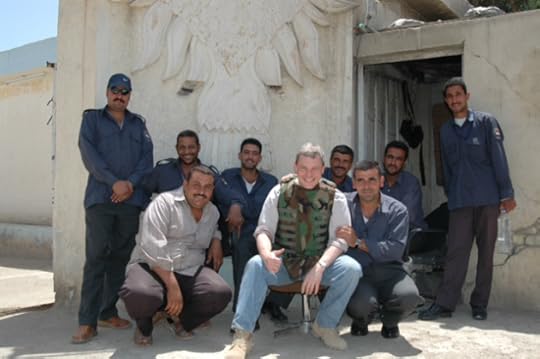Anne Speckhard's Blog: Anne Speckhard, page 4
July 17, 2014
Four Boys Killed in Gaza & the Need for a Cease Fire
When I traveled through the West Bank and Gaza conducting research interviews with Hamas, Fatah, Palestinian Islamic Jihad, PFLP and other terrorist leaders, operatives, and in the case of dead suicide bombers—their families, for my book Talking to Terrorists I was often more frightened of the Israelis than of the Palestinians. In fact I stopped going across for research interviews after a trip to Israel where my laptop was taken from me and not returned for days and I received a particularly grim warning from a member of the Israeli police force. He told me that despite my being married to an American Ambassador and my own work consulting on counter-terrorism in behalf of NATO, the U.S. Department of Defense and the UK Home Office and that I had been invited by the Israeli National Defense University to present my research on terrorism in Israel, I was under suspicion by the Mossad. He said the Mossad was worried because I routinely came and went in Gaza, West Bank, Lebanon and in Brussels where I was living at the time and spoke with all the terror groups. They feared that somehow I could become sympathetic and carry messages or money to aid terrorist groups—something I would have never done. I was studying them and trying to understand their motivations and what had put them on the terrorist trajectory and what might also take them back off it.
I did however, as the Mossad feared, feel sympathy for Palestinians when I walked and lived among them for research forays into the West Bank and Gaza. Dressed like a Palestinian I was often hauled off of mini-buses at Israeli gunpoint, held for hours at checkpoints, and threatened in multiple ways by soldiers. I also was held for hours at the Ben Gurion airport and the Mossad physically threatened one of my students on one of my research trips. I think they were afraid to directly say to me what they said to him.
The police officer that threatened me on my last trip in, told me that I would be arrested, held in interrogation for a minimum of two weeks and that my family would have no idea where I was and that I would come out a changed person—psychologically traumatized. I knew how the Palestinians described interrogation so I had no doubt he was right about that. He told me I had to stop crossing over for my research interviews. When I said I was committing no crime researching how terrorists think he searched for ways to make his threats hurt more. He asked how it would affect my husband’s career as a U.S. Ambassador if I were arrested by the Israelis—I told him it wouldn’t. He told me that the collaborators would plant money or messages in my luggage or on my person. I said, “Let them.” And then he went for the jugular and asked who would care for our children while I was under interrogation and no one knew where I was—my husband was then serving the U.S. State Department in Iraq and not at home to care for them.
After uttering a few expletives I went back to my hotel and called my husband who without hesitation told me “Go to Ramallah tomorrow as planned. Let them arrest you. You haven’t committed any crime. Continue your research.” But I didn’t want to go missing when he was in Iraq. I didn’t feel that was fair to my children who were mostly grown at the time but who would likely not handle that well. And I remembered Rachel Corey—an activist who was killed by an Israeli bulldozer she had tried to block. I didn’t want to share her fate.
And I had already sat with Zakaria Zuebedi, a sender of suicide bombers, in his hideout interviewing him, knowing full well he was on an Israeli hit list. During our time together he received a phone call. “Hello?” “Hello?” he had repeated four or five times into his phone while I thought, Oh geez, they are triangulating his position and running voice recognition—we’re going to get the missile!
I didn’t want to be the cat facing its ninth life.
But that’s all about me. What I can say having interviewed and even stayed overnight in the homes of Palestinian terrorists when they offered me a place to stay due to the checkpoints hampering our free travel—is that Palestinian militants and even the normal population will do anything for their children. If one child is unjustly killed it activates hundreds to volunteer to do and sacrifice anything to express their outrage, grief, sorrow, anger and to enact revenge for injustice.
The four children killed on the beach today thus for me send out a dire warning of worse to come. Nearly all of Palestinian terrorism is driven by trauma and revenge and it is a cycle that keeps repeating itself endlessly. Until Palestinians feel some hope for their future and security, and certainly while their children are being killed in significant numbers they will keep up the fight—even to their last self destructive breath. And while we can blame their leadership for much of it, we also must understand the psychology of overwhelming traumatic loss and pain—it drives even normal people to become ruthless killers.
While I certainly believe every country has the right to defend it’s boundaries and there should be an end to the Palestinian missiles firing upon Israel, I’m sure engaging in any activities that mistakenly takes the lives of Palestinian children—by accident or otherwise—is only going to make things much, much worse. I hope the Israelis can find a way to broker a cease-fire or even offer a long unilateral one to see if things can calm down in the meantime. Continued hostilities as we are witnessing today are unlikely to achieve anyone’s security. And it’s likely only Israel that can put a stop to it by taking the higher road and calling a cease-fire, at least for the time being.
Anne Speckhard, Ph.D. is Adjunct Associate Professor of Psychiatry at Georgetown University in the Medical School and author of Talking to Terrorists. She conducted psychological autopsies of over half of the one hundred and twelve Chechen suicide terrorists, interviewed hostages from Beslan and Nord Ost and has interviewed over four hundred terrorists, their family members and supporters in various parts of the world. She traveled extensively through the West Bank and Gaza during the Second Intifada.







June 29, 2014
End Times Brewing: An Apocalyptic View on al-Baghdadi’s Declaration of a Caliphate in Iraq & the Flow of Foreign Fighters Coming from the West
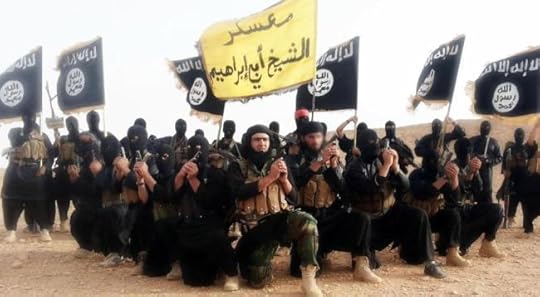
Al-Baghdadi and his group of extremists—ISIS (the Islamic State in Iraq and Sham)—have declared the establishment of a Caliphate, renaming their organization the Islamic State. They did this on the first day of Ramadan, a holy and symbolic day for Muslims. Already having control of extended territory in Iraq and claiming to have taken at least partial control of various oil revenues, the jubilant fighters now invite western Muslims to stream into Iraq to join them. Whether their claimed victory and caliphate will have the drawing power they hope remains to be seen—although hundreds of western youth have already joined them from the U.S., Canada and Europe.
Declaring a caliphate in Iraq may also have the power to draw the U.S. bombers into action—at least temporarily accelerating armed conflict in the area. Likewise, having now declared themselves the restored caliphate the ISIS fighters will most certainly have Jerusalem, Mecca and Medina squarely in their sights and will want to destabilize Jordan, destroy the government of Israel, and make their march into Saudi. Perhaps such actions are only the “wet” dreams of extremists—yet one must also be aware of the power of apocalyptic dreams in spurring on the violence of men who are completely convinced they are bringing in the final apocalyptic vision of the “end times”.
Most Westerners are aware of Christian views on the so-called “end times” in which conflicts break out; natural disasters become commonplace; weather becomes extreme and finally an anti-Christ appears to rule the world. At that point according to Christian scriptures—believers are raptured—that is taken up in the clouds while still alive. And the rest remain on earth for a period of trials and tribulations under the anti-Christ—until the Messiah, claimed to be the resurrected Jesus arrives in Jerusalem on his white horse, storming through the clouds, his mighty sword raised to battle and ultimately defeat the anti-Christ and his minions. Thereby the final judgment is ushered in and those deemed worthy of eternal life are invited into the eternal heaven that appears and is instituted on earth. According to Christian scriptures, The streets of Jerusalem are at that time lit by an unworldly glow, the streets are paved with gold, man’s “swords are beaten into plowshares and spears turned into pruning hooks” (Isaiah 2:4) and Jesus ultimately reigns forever.
Many fundamentalist Christians in the U.S. and elsewhere look eagerly for these “end times” and now interpret many signs of it being imminent in our time—i.e. the establishment of Israel as a state; armed conflict in the middle east; the emergence of extreme weather patterns; hard economic times and a general state of perceived sin in the world. And they do not welcome military intervention to stop it—they are instead all for the apocalyptic vision and accelerating the final end of the world as we know it.
What most westerners don’t know is that many Muslims also harbor apocalyptic and eschatological views and that their vision parallels with the fundamentalist Christian views. Muslims also expect the end of the world to be ushered in by the establishment of a Jewish state, armed conflict in the Middle East, arbitrary killings, a rise in natural disasters and the rising of an anti-Christ who will have global influence. This will, as in the Christian tradition, ultimately usher in the return Jesus—who in Islamic tradition is viewed as one of the holiest prophets of Islam—who will, as in the Christian traditions, return to the area biblically identified as Galilee. The Muslim tradition says he will return to the mosque of the white minaret, which is believed to be in Damascus. His first task will be to take out the anti-Christ. He will according to Muslim scriptures overtake the anti-Christ at the Gate of Lud believed to be right outside of Tel Aviv, inside Israel proper. Then he will judge the living and ultimately reign over the righteous.
In Islamic tradition there will also be a “Mahdi” who appears shortly before the emergence of the anti-Christ and his battle with Jesus. This Mahdi will be a righteous ruler who will begin the battle with the anti-Christ and then be joined by Jesus. Interestingly, the Shia Muslims believe the Mahdi is already living here among them.
The Mahdi is supposed to be a just and good ruler whereas the anti-Christ ushers in a reign in which blood letting occurs without the people even understanding how and why they are being killed—much like my Iraqi associate’s recent e-mail recounting how Sunnis are daily being randomly taken off the streets, killed for no clear apparent reason and then their families called to recover their dead.
Interestingly, hadith of Saheeh Muslim predicts the anti-Christ to appear on the road between Iraq and Syria. And in the Musnad of Iman Ahmed the hadith says that the anti-Christ will emerge from the remnants of the original extremist groups that were fought by the Prophet. This refers to the original Khawarij who made “Takfir”—that is to declare other Muslims as nonMuslims and justify killing them. This is much like today’s al Qaeda fighters and especially their offshoots who do the same—hence the name Takfiris—which is often applied to those who live by the al Qaeda ideology or a derivation of it.
During the time of the Mahdi those under the black flags will march unto Mecca where they will give allegiance to him at the Ka’bah (the black holy cubic structure at Mecca that marks the direction of prayer) and solidify his legitimacy in the Muslim world. Interestingly al Qaeda groups currently march under black flags (with Islamic inscriptions) although it would be hard to argue that the Mahdi—a just and righteous ruler would emerge from among their ranks. That is unless one believed that group to be ushering in righteousness, as many of them do.
Whether one subscribes to such views or sees them as complete fundamentalist nonsense, it’s important to know that others do take the “end times” seriously. And given the parallels between apocalyptic scriptures in both Muslims and Christians tradition and the current events in Syria and Iraq and the Islamic scriptures referring to end times, these events occurring during holy month of Ramadan and the scriptures supporting it may certainly give fuel to many more of our western youth going to join the newly claimed caliphate in Iraq.
Anne Speckhard, Ph.D. is Adjunct Associate Professor of Psychiatry at Georgetown University in the Medical School and author of Talking to Terrorists. She conducted psychological autopsies of over half of the one hundred and twelve Chechen suicide terrorists, interviewed hostages from Beslan and Nord Ost and has interviewed over four hundred terrorists, their family members and supporters in various parts of the world.
Mubin Shaikh, M.S. is a former Muslim extremist who became an undercover counter-terrorism operative. He has extensive experience in domestic counter-terrorism operations and policing and is now a Ph.D. candidate in the psychology of radicalization and terrorism. He regularly converses with and confronts ISIS members online and is an expert in counter-extremist messaging.







May 9, 2014
Miranda Rights, “Public Safety” and the Police State
Attorneys in the Boston bombing case are jockeying with the judge over whether or not testimony garnered from Dzhokhar Tsarnaev during thirty-six hours of FBI questioning while he lay in a hospital bed recovering from a gunshot wound—his jaw wired shut and heavily doped up on pain medication—will be admissible as evidence against him in his upcoming trial. The FBI unrelentingly questioned the younger Tsarnaev without reading his Miranda rights to him even though he repeatedly answered in writing that he wanted an attorney present during their interrogations.
Tsarnaev’s lawyers (via the Boston Globe) state that Tsarnaev ““wrote the word lawyer 10 times, sometimes circling it” and that “At one point, he wrote: ‘I am tired. Leave me alone.’ . . . His pen or pencil then trails off the page, suggesting that he either fell asleep, lost motor control, or passed out.”” In the Tsarnaev investigations the FBI justify their unremitting questioning without granting Tsarnaev his right to a lawyer being present on the grounds of protecting “public safety”. While it may have been protective to find out if there were other bombs before bothering with an attorney, the judge is pondering if what Tsarnaev told investigators under duress may be used as evidence against him—a completely other matter. While no one should feel sympathy for a terrorist who attacked our citizenry—we should all be concerned if this same law enforcement tactic can be applied to any U.S. citizen—ourselves included and then the evidence that is obtained under duress without an attorney present can then be used to convict us.
The same grounds of “public safety” were used and accepted by a judge in another case that I was involved in a few years ago where the defendant, Annette Morales Rodriguez, was also clearly guilty of a heinous crime. Rodriguez who had gruesomely cut a fetal child out of another woman leaving her for dead, while she attempted to pass the baby off as her own stillborn child, was questioned under rather unusual duress. While I found her crime horrifying, I also found it extremely disturbing that Rodriguez was picked up and escorted by Milwaukee police to a local hospital and subjected to two gynecological exams, the latter that she clearly, and unequivocally, refused but was subjected to anyway. At the same time—while Rodriguez, a former rape and incest survivor and very mentally ill person, was begging not to be subjected to another gynecological exam, a Milwaukee police official questioned her about her crime. Not surprisingly, Rodriguez, broke under the pressure of having to undergo yet another forced vaginal exam and admitted her crime. While arguments can also be made in her case for aggressively questioning her and not delaying to wait for her attorney, the judge didn’t seem to have any problem with allowing Rodriguez’s confession obtained under this level of duress to be admitted into the court as evidence. I found that so disturbing I wrote a book about it telling her story (Fetal Abduction: A True Story of Multiple Personalities and Murder).
When I hear these cases I begin to wonder about the potential abuses of government power when security services and law enforcement personnel can question us under medical duress—including medication and invasive bodily searches—without a warrant, while we attempt to refuse, and without reading our rights to us or supplying a lawyer if we ask for one. And I find it doubly horrifying that what is gained under this level of forced interrogation methods alongside what some might call “soft torture” –can be used against us in trial—and this all in the supposed service of “public safety”!
It seems to me if this sort of thing is allowed, it is not only our bodies and minds under potential assault by security professionals trying to do their jobs—perhaps at our grave expense if we are innocent—which is why in the United States constitution we have the Fourth Amendment to protect us. In the above examples, innocence is clearly not the case—but the same reasoning and behaviors could have been applied to a wrongly accused and innocent suspect—resulting in questioning under medical duress and even an invasive internal bodily search all without a warrant!
Add to that, it is not only ourselves that can today be interrogated in such a manner, but it appears that our cell phones and electronics can also be searched without warrants. The U.S. Supreme Court will soon hear two such cases that involve the warrantless searches of cell phones made pursuant to arrest. In the case of Riley v. California, David Riley was arrested for an expired registration at which time loaded guns were found in his car. A warrantless search of his cell phone then led to a further arrest and conviction for attempted murder. The California appeals court claimed that neither search required a warrant and likened the search of a cell phone to the evidence found in wallets and personal papers that have long been subject to examination pursuant to an arrest.
The second case, United States v. Wurie involves the warrantless search of Wurie’s cell phone following an arrest for drug dealing. In his case, the federal court in Boston threw out the evidence found during the warrantless search and Judge Norman H. Stahl wrote in his opinion that, “Today, many Americans store their most personal ‘papers’ and ‘effects’ in electronic format on a cellphone, carried on the person.”
Indeed when current law supposedly protect us from our doors being broken into and our homes being invasively searched without a warrant it seems contradictory that our electronic items are now potentially open to unchecked law enforcement access—akin to breaking down the doors to some of our most privately held information.
Is computer search and seizure the new frontier? That’s what Professor Orin Kerr of George Washington University School of Law and an expert in search and seizure is claiming. When viewed alongside the cases arguing “public safety” as a rationale for questioning individuals while under duress—without reading them rights or granting them access to their attorney, and judges (at least in the case I served on) accepting police evidence obtained under such severe duress as evidence to convict—it seems we are rapidly losing our rights.
If Rodriguez could convict herself through a confession obtained during a refused but, carried out nonetheless, invasive bodily search—all in the name of “public safety”—I wonder have we not effectively surrendered our rights in the hopes of being kept “safe”? And are we not just the opposite of “safe” when our own law enforcement teams can invade our computers, cell phones and even our bodies to obtain evidence that will then appear in court and used against us? For me, this is a harbinger of a police state.
Anne Speckhard, Ph.D. is Adjunct Associate Professor of Psychiatry at Georgetown University in the Medical School, forensic expert, researcher, public speaker and author of Talking to Terrorists. She conducted psychological autopsies of over half of the one hundred and twelve Chechen suicide terrorists, interviewed hostages from Beslan and Nord Ost and has interviewed over four hundred terrorists, their family members and supporters in various parts of the world.







May 7, 2014
“Bring Back our Girls” – Nigeria’s Struggle with Boko Haram
“Bring back our girls” is the plea of hundreds of bereaved Nigerian parents terrified that their daughters—two hundred sixty-six schoolgirls kidnapped by the Boko Haram terrorist organization and believed to be held in the twenty-three thousand wild acres of the Sambisa Forest of northern Nigeria will be sold to slavery—if they haven’t already been spirited out of the country.
“I abducted your girls,” Abubakar Shekau, the clandestine religious leader of Boko Haram, an Arabic speaker and Islamic scholar, taunted parents and authorities alike in an hour-long video that opens with fighters shooting guns into the air and shouting “Allahu akbar!” “By Allah, I will sell them in the marketplace,” he continues. Shekau’s vow to sell them into slavery is not an idle threat given that trafficked Nigerian girls, forced into prostitution, have previously shown up as far abroad as European brothels.
Boko Haram was formed in the city of Maidurguri, Nigeria in 2002, by the charismatic Muslim cleric, Mohammed Yusuf who originally named the group Jama’atu Ahlis Sunna Lidda’awati wal-Jihad, which in Arabic means “People Committed to the Propagation of the Prophet’s Teachings and Jihad”. But locals quickly dubbed it Boko Haram—loosely translated from the local Hausa language to, “Western education is forbidden”.
“Anyone who is not governed by what Allah has revealed is among the transgressors” is one of the Islamic scriptures claimed by Boko Haram, a militant jihadi group that is attempting to violently overtake Nigeria to create an Islamic state. Boko Haram forbids its Muslim followers to take part in anything that is seen as part of Western society. That includes voting in elections, wearing western clothes or receiving a Western education. And critics of the group—Muslim and Christians alike—are silenced in drive-by assassinations carried out on motorbikes. The group has been responsible for the drive by assassinations of political leaders, police, and clergy. They have also exploded bombs throughout northern Nigeria attacking military barracks, police headquarters and the UN headquarters in the capital. They are also responsible for ruthless attacks on entire villages—razing and burning homes to the ground and killing all the inhabitants and now they have begun killing and abducting students.
What forces empower such a ruthless organization? For starters, Mohammed Yusef, Boko Haram’s founder, understood the socio-cultural forces of disillusionment at play among his impoverished countrymen—particularly Muslims who were unhappy with westernized forms of education. When he founded Boko Haram, Yusuf cleverly also founded a mosque and Islamic school in the northeastern city of Maiduguri, where the group had its headquarters. His aim was to capitalize on long-standing resistance by Nigerian Muslim families to send their children to government run “western education” schools. In a common tactic he understood that through offering Islamic education he could seduce young people into being educated under his tutelage. His goal was to rise up and indoctrinate an army of committed youth to oppose the existing rule and ultimately create an Islamic state. Looking to other African uprisings he likely also understood the power of child soldiers. And like many other followers of al Qaeda ideologies, Yusuf harked back to “better days” and was longing for the idealized Sokoto caliphate, which ruled parts of what is now northern Nigeria, Niger and southern Cameroon, but fell under British control in 1903.
Yusuf’s long awaited uprising began in 2009 when Boko Haram militants attacked police stations and government buildings in Maiduguri. Shoot-outs commenced and hundreds of Boko Haram supporters were arrested while thousands fled the city. Ultimately, Yusuf was killed and his body was shown on state television, as the government declared that Boko Haram finished. That was 2009.
But like many victorious statements made against terrorists, this claim would prove premature. Boko Haram supporters reassembled in 2010 and forcibly freed hundreds of their cadres from prison and have since launched an even fiercer campaign of terrorism upon the people and government of Nigeria—most recently kidnapping hundreds of girls from their schools and homes.
The U.S. State Department’s annual report on terrorism, issued last month, estimates the group membership at hundreds to a few thousand, but warned that “the number and sophistication of BH’s attacks are concerning” and that their activities had spilled over Nigeria’s borders into Cameroon, Chad and Niger. According to the report, Boko Haram, like many al Qaeda affiliates, funds itself mainly through bank robberies and other related criminal activities including kidnapping for ransom.
In 2011, the U.S. House Subcommittee on Counterterrorism and Intelligence cited Boko Haram as an “emerging threat” to the United States. The UN echoed that concern in a 2012 report that cited regional officials claiming that “Boko Haram had established links with Al Qaeda in the Islamic Maghreb,” and that “some of its members from Nigeria and Chad had received training in Al Qaeda in the Islamic Maghreb camps in Mali during the summer of 2011.” General Ham, head of the U.S. Defense Department’s Africa Command, also confirmed collaboration among these terrorist groups.
Abubakar Shekau, the group’s current leader hides from public contact and communicates clandestinely with his followers. Shekau is known to be particularly brutal. “I enjoy killing anyone that Allah commands me to kill — the way I enjoy killing chickens and rams,” Shekau declaed after an attack in Kano, Nigeria that killed one hundred eighty. Last week the group attacked the town of Gamboru Ngala on Nigeria’s border with Cameroon killing three hundred residents. In that attack the terrorists set homes and shops on fire and shot at anyone trying to escape.
So far, this year over one thousand five hundred people—both Muslims and Christians—were killed by Boko Haram, and thousands more were killed during the group’s five year history. The group claims that Western influences are corrupting to Muslims and their aim is to create an Islamic state imposing sharia law on the country of one hundred and seventy million, where half the population is Christian.
What is the answer to Boko Haram? When one looks at the reasons for it’s origins some go back to cultural tensions over westernization, but like many hot spots for terrorism—the inequalities and corruption that are rife in Nigeria most likely play the central role. Nigeria is an oil and mineral rich country. Yet, according to UN reports, Nigeria ranks among the most unequal countries in the world with stark poverty especially endemic in the northern regions where Boko Haram has found its following. Until the government of Nigeria addresses the glaring issues of inequality, corruption and poverty and proposes an educational system that is also attractive to Muslims, groups like Boko Haram will likely continue to find supporters for their violent and extremist messages. Disillusioned and beaten down populations often fall prey to the wild claims for a utopian future proposed by insurgents and terrorists.
Although perhaps in February when Boko Haram slaughtered fifty teenage boys, burning some alive, at a college in northeastern Nigeria and now in April when they abducted hundreds of school girls—the population may be seeing that this is not a group likely to bring any real hopes of justice or equitable distribution of wealth and opportunity. They are simply forces of death and destruction wrapped up in a distorted and hijacked version of Islam that advocates violent overthrow of corrupt governments with no clear path of ever achieving its goals.
While Shekau continues to taunt the impotent Nigerian government officials—he threatens to sell and marry off girls as young as nine years old—the abducted Nigerian girls await their fates. Thankfully, the U.S. government has offered, and the Nigerian government accepted, a team of military and law enforcement, hostage negotiating and psychological experts to help recover the girls. Let’s hope these girls find their deliverance sooner, rather than later.
Anne Speckhard, Ph.D. is Adjunct Associate Professor of Psychiatry at Georgetown University in the Medical School, forensic expert, researcher, public speaker and author of Talking to Terrorists. She conducted psychological autopsies of over half of the one hundred and twelve Chechen suicide terrorists, interviewed hostages from Beslan and Nord Ost and has interviewed over four hundred terrorists, their family members and supporters in various parts of the world.







April 29, 2014
Waterboarding, Sarah Palin and Our Image Abroad as the “Great Satan”
“Waterboarding is how we baptize terrorists,” Sarah Palin told an audience at the National Rifle Association’s Stand and Fight rally last weekend. She would reinstitute the practice, she told listeners, calling it a valuable technique.
What Sarah Palin perhaps doesn’t know is that when al Qaeda was being formed, the middle eastern extremists who were using terrorism to fight their own corrupt governments had finally given up fighting inside their own governments in the face of overwhelming force. Realizing that they couldn’t stop their own governments they began to look for who was on the outside—funding and propping up torturous and unjust regimes. And that led them to begin to question foreign policies carried out by the U.S. and the EU. Ideologically it led to the budding AQ terrorists labeling the west as the “Great Satan” and to their new initiatives of attacking us. They called that an attack on the “the head of the snake.”
Sarah Palin, like all of us wants that to stop. But is she right about how to go about it?
Waterboarding, a technique in which water is poured over the angled face of a prisoner—so as to fill his nose, mouth and lungs—terrifyingly creates the feeling of drowning. “When performed on an unsuspecting prisoner, waterboarding is a torture technique—without a doubt,” Malcolm Nance, former master instructor and chief of training at the U.S. Navy Survival, Evasion, Resistance and Escape School (SERE) in San Diego states. “There is no way to sugarcoat it,” he writes, referring to that he personally witnessed and supervised the waterboarding of hundreds of U.S. military trainees who were drilling to resist torture.
“It does not simulate drowing,” Nance states, “as the lungs are actually filling with water. There is no way to simulate that. The victim is drowning … “Unless you have been strapped down to the board, have endured the agonizing feeling of the water overpowering your gag reflex, and then feel your throat open and allow pint after pint of water to involuntarily fill your lungs, you will not know the meaning of the word.”
“Waterboarding is slow-motion suffocation with enough time to contemplate the inevitability of blackout and expiration” Nance continues. “Usually the person goes into hysterics on the board. For the uninitiated, it is horrifying to watch. If it goes wrong, it can lead straight to terminal hypoxia – meaning, the loss of all oxygen to the cells.”
And horrifyingly, the lack of physical scarring allows the victim to recover and be threatened with its use again and again.
Waterboarding was on the CIA’s list of approved “enhanced interrogation technique’s” for use against high-value terror suspects in 2005, and was included in a 2009 U.S. Department of Justice memo released in April 2009 as an approved torture technique. Waterboarding was carried out under the Bush administration but has now been condemned by President Obama as “torture”.
According to journalist Julia Layton, when waterboarding was used in counter-interrogation training for CIA operatives and Navy SEALs, the trainees could not survive it without breaking. According to her sources, CIA members have lasted an average of fourteen seconds before begging to be released.
Being subjected to drowning and feeling that one is imminently about to die is a powerful psychological torture method and it breaks down both our guys, as well as our enemies. Khalid Sheik Mohammed, the mastermind of 9/11 was water boarded and reportedly managed to last an impressive two minutes. Perhaps his faith kept him steady in the face of overwhelming terror. Yet he too broke and began confessing.
No doubt water boarding works to create terror and an overwhelming sensation of imminent death by drowning. Yet while Palin believes that water boarding is a useful interrogation technique, those who have had it in their arsenal of “torture” tools disagree. CIA officials according to Layton, stated that it is a poor interrogation tool because it scares the prisoner so much you can’t trust anything they tell you as a result.
When Jesse Ventura, the colorful, former Minnesota governor recalls how he was waterboarded as part of his Navy SEAL training to resist torture techniques he states, “It’s drowning. It’s torture,” and that it can kill you. Trying to make the point of how serious waterboarding is and that one will say anything to make it stop, he declared to Larry King, “You give me a waterboard, Dick Cheney and one hour and I’ll have him confess to the Sharon Tate murders!”
In September 2006, Senator John McCain, who had been tortured as a prisoner of war in Vietnam stood up to his party and tried to outlaw torture techniques against all U.S. held prisoners. In 2006, the U.S. military also made it illegal for the any members of the military to use this technique. Shamefully, it took longer for the CIA to catch up.
“The lack of physical scarring allows the victim to recover and be threatened with its use again and again,” Nance writes adding that whoever carries out waterboarding has to move from humanity to hatred and overcome basic human decency to endure causing its torturous effects.
And our use of such methods has now opened Pandora’s box for what may be considered by terrorists as acceptable to be used against our soldiers. Just as now dead, Chechen terrorist leader Shamil Basaev stated that he justified the terrorist use of weapons of mass destruction, because poisons had been used by the Russian government to kill his cadres—terrorists often attempt to justify their acts on the basis of our own.
Nance writes, “Our own missteps have already created a cadre of highly experienced lecturers for Al Qaeda’s own virtual school for terrorists” Indeed, even when we try to keep torture methods classified, convicted AQ members and released captives broadcast widely over the Internet what they were subjected to and how they endured.
While Sarah Palin may believe “soft” torture that leaves no physical marks of harm done is useful, waterboarding is nevertheless psychologically devastating. And that it is a useful tool for interrogating is also not a strongly supported position among those in the know. Just as I learned when I was helping build what became the Detainee Rehabilitation Program for our 20,000 detainees in Iraq, the best approaches to interrogation are to find common ground, rapport and build a relationship where the detainee begins to trust and open up. Terror and pain may make a person “talk” but what they say in order to escape from torture often doesn’t add up.
And the anger in that person over being mistreated and in others—including family members and friends—who learn of it often creates more of a threat than elicits any useful information.
Indeed when the pictures from Abu Ghraib circled the world via the Internet, and now, when burned up corpses of children killed in drone attacks are sent around via YouTube—these powerful images of what the West is all about to those who haven’t yet decided if what the militant jihadi terrorists claim in their anti-Western ideology is correct. And it only takes one or two of these—like the Tsarnaev brothers for example, to jump into the terrorist camp and wreak havoc for all of us.
Images and stories about torture and acts that cross the bounds of human decency can easily be used to push fence sitters into the enemy’s camp ideologically and also to then move them along the terrorist trajectory into finally enacting terrorism.
While Sarah Palin may consider herself a patriot, all we need are more Americans publicly espousing waterboarding, and other unacceptable terror methods, to push even more potential enemies into believing that indeed the West is serving, or is itself, the Great Satan.
Anne Speckhard, Ph.D. is Adjunct Associate Professor of Psychiatry at Georgetown University in the Medical School and author of Talking to Terrorists. She conducted psychological autopsies of over half of the one hundred and twelve Chechen suicide terrorists, interviewed hostages from Beslan and Nord Ost and has interviewed over four hundred terrorists, their family members and supporters in various parts of the world.







April 24, 2014
Honoring Civilian Service in Danger Zones
Today, April 24th, 2014, Dr. Jerry Umanos, a Chicago pediatrician who moved to Afghanistan to treat children and train Afghan physicians was gunned down at a Kabul hospital—killed by an Afghan police guard. While we have become sickeningly accustomed to hearing about “green on blue” attacks on our soldiers as the Afghan people become more and more disenchanted with foreign troops operating on their soil—this was a cold blooded attack on a civilian non-military worker.
A fact that is often overlooked these days, is that our wars are fought not only with soldiers, but with a great number of civilian workers going out alongside of them—military contractors who perform a myriad of tasks supporting military operations; government agency workers representing in the case of the U.S.—the Departments of State, Energy, Labor, Health & Human Services, etc.; journalists; and nongovernmental (NGO) workers performing all kinds of missions—many of them humanitarian.
Most people don’t realize that in 2007 there were actually more civilian contractors in Iraq than combat troops and that in 2009 contractor deaths exceeded military deaths in Iraq. According to a 2013 report of the Special Inspector General for Iraq Reconstruction (SIGIR): “In September 2007, the United States had more than 170,000 combat personnel in Iraq as part of the counterinsurgency operation, with more than 171,000 contractors supporting the mission.” These contractors are credited in the report for supporting “the counterinsurgency mission in unstable, yet strategically significant, areas such as Baghdad, Anbar, and Babylon provinces.”
And when contractors, NGO workers and civilians serve in high threat security zones they are often not working with the same pre-deployment training or the same support during and after their deployments that military and government workers receive. Yet they too get injured and killed—like Dr. Umanos—who was trying to train up an Afghan medical force. And even when they return home safely—mission completed—they, and their families can still suffer considerable psychological strain in the months and even years to come. But there is no Veterans Health Administration for civilian workers to turn to for support. And sadly we as a society are still slow to recognize our hundreds of thousands of civilians who have or are now serving abroad in high threat and danger zones.
The dangers for civilians are greater now that the military outsources many of its jobs to civilian contractors just as the dynamics of war have also drastically changed. These days, with guerilla and terrorist adversaries attacking anywhere at anytime, the battlefront “rear” and “front” no longer are clearly delineated. The enemy attacks any and everywhere, placing civilians who assist military operations in the same dangers as the uniformed warriors and often injuring and killing civilian workers who would have in the past been operating in the “rear”.
While our military serviceman returning from Iraq and Afghanistan have faced shameful delays and nonresponsive replies from the Veterans Health Administration to get their claims covered—civilian contractors who return from the battle space with similar injuries—including limbs blown off, traumatic brain injury, PTSD, depression, traumatic bereavement and the like—have found they too have had to battle with the insurance coverage provided under the Defense Base Act (DBA)—a law requiring insurance coverage for those contracting with any agency of the U.S. government for work outside the U.S.
At present the recording of civilian contractor deaths in conflict zones is thought by many to be underreported and sadly many of these civilians die unheralded. Likewise those who are wounded are finding it difficult to get their needs met.
In terms of psychological well being, a 2013 RAND study, aptly titled “Out of the Shadows: The Health and Well-Being of Private Contractors Working in Conflict Zones” found evidence for posttraumatic stress disorder (PTSD) in twenty-five percent of their sample, depression in eighteen percent, and alcohol misuse in over half the sample. And longer deployments and increased combat exposure was associated with higher rates of distress. In our 2007 study of resilience in civilians deployed in Iraq, our research team found similar findings.
Serving in a combat zone, high threat or danger zone is just that—dangerous—and it’s time we recognized the hundreds of thousands of civilians who are doing just that. A new organization We Served Too (WS2) has been formed with the mission to raise awareness; conduct research; develop education materials; support resilience, health and well-being; and create a web-based community, support network and information resource for those who are serving or have served in conflict and high threat security zones. Currently an oral history project collecting lessons learned from civilians who deployed into conflict and high threat/danger zones is underway. Volunteers and civilians who served are welcome to join.
Today colleagues of Jerry Umanos told CNN that Jerry “loved the Afghan people, loved the country, and loved to teach”. We need to honor his service and ultimate sacrifice just as we do for our military soldiers, and support all those, like him, who are risking it all to try to make our world a better place.
Anne Speckhard, Ph.D. is Adjunct Associate Professor of Psychiatry at Georgetown University in the Medical School and author of Talking to Terrorists. She conducted psychological autopsies of over half of the Chechen suicide terrorists, interviewed hostages from Beslan and Nord Ost and has interviewed over four hundred terrorists, their family members and supporters in various parts of the world. She is Co-Director, with Martha Hudson, at We Served Too.







April 23, 2014
A Book to Help with Bedtime
Ask any parent and they’ll tell you bedtime can be difficult. Children often don’t want to part ways with their parents, sleep in their own beds or go to sleep! But bedtime can be a lovely time to set the stage for a good night’s sleep and sweet dreams. When I wrote Timothy Tottle’s Terrific Dream I was remembering my children’s fears of changing size and slipping down the bathtub drain and also how hard it was at times to get them to relinquish play for sleep. And it’s exactly those kind of fears that can show up big-time in a screaming, wake up Mom and Dad nightmare. To address the size morphing and bathtub drain fear I decided to create a childhood character that took his bath, toweled off, brushed his teeth and went to bed and then suddenly in a dream was back in the tub, shrinking and swirling right down the drain—and having a blast! While shrinking and swirling down the drain is not very likely let’s at least make it a fun idea until little ones are totally sure of size constancy…To Timothy Tottle’s amazement he lands in a fantasyland where bathtub water cleaning monsters are finishing their work and about to have a party. I decided to have them all jump on the beds until the sheets and covers had fallen off and Timothy and the monsters fall exhausted into sleep. Most kids would like to jump a little on the bed and fire back up when Mom or Dad is trying to get them to calm down so I thought a bit of vicarious misbehaving was called for. And following that brief indulgence is a gentle suggestion that after a full day’s worth of frolicking, kids and monsters need to sleep. And even monsters dream of having someone like Timothy’s mother kiss and tuck them gently into bed. Gently drifting off to sleep is the big proposal here… And given that mammals like to sleep with their mothers and lest little ones worry about Mom is going to take off down the hall, the book ends with Timothy waking up in his own little bed after sleeping the whole night through and then racing down the hall to wake up his Mom and tell all about his terrific dream! And she tells him this is just the beginning—he can have a great and fun dream anytime he wishes—he just has to go to bed and sleep for that to happen!
Anne Speckhard, Ph.D. is Adjunct Associate Professor of Psychiatry at Georgetown University Medical School and author of several books. Her latest children’s book is Timothy Tottle’s Terrific Dream.







April 22, 2014
Childhood Cancer and Posttraumatic Stress Disorder
“Your child has cancer.” These are words no parent ever wants to hear.
“You have cancer,” is often a meaningless sentence to a child, but the fear and horror the child sees in his parents’ faces and hears in their voices is unmistakable.
For parent and child, a cancer diagnosis is a mental shock. And the physical shocks that follow that diagnosis—invasive treatments, surgeries, radiation and chemotherapy are also difficult to bear, also potentially traumatizing.
Cancer is a life threatening disease. And the threat to life—including the treatments to save life—can be traumatizing to those who witness their child or sibling going through cancer treatment. Death of course makes it even harder. Treatment is also potentially traumatizing to the child with cancer, potentially leaving psychic scars lasting well after a hopeful recovery.
Facing a series of repeated life threatening events puts each of this group (parents, siblings, and the childhood cancer patient as well) at risk for developing posttraumatic stress disorder (PTSD). PTSD is a disorder that is commonly associated with exposure to combat, natural disasters, or bodily assault.
PTSD in those who experience cancer, usually presents in response to feeling one’s life or one’s child/or sibling’s life is under serious and/or repeated threat.
The symptoms of PTSD include:
Reexperiencing the cancer treatment in nightmares, intrusive thoughts or flashbacks—scenes that are often reported to be much like full sensory movies playing unbidden in one’s mind.
Avoiding places, people and reminders of the cancer experience including shutting down sharing with others what one has been through.
Negative changes in beliefs and feelings including feelings of guilt, fear, shame or losing interest in previously enjoyed activities and feeling alienated from others.
Bodily hyper-arousal experienced as agitation, inability to fall or stay asleep, being easily startled, irritable, having difficulty concentrating and so on.
To qualify for a diagnosis of PTSD these symptoms must last for longer than a month and must significantly interfere with life functioning in relationships, work, education or other important areas of life.
In some cases delayed responses occur and in others only some of the features of PTSD occur. Or other related disorders arise such as anxiety disorder or panic, phobias or depression. Those who are suffer from PTSD are also at increased risk for substance abuse—as alcohol or drug abuse arises out of attempts to self medicate flashbacks and nightmares away.
Children who have PTSD often manifest their symptoms in ways that are unique to their developmental stage. For instance traumatized children may revert to wanting to sleep with their parents or go backwards on skills they previously mastered. They also often display a need to play and replay the cancer experience in attempts to master it. Or hyper-arousal may come across as aggression or misbehavior, especially in boys. Girls often go dissociative following a traumatic event—meaning their minds compartmentalize the event. They may say “everything is fine” and show no emotion but if someone where to measure their pulse when cancer is being discussed, they would see that their bodies are showing agitation. More loving touch, sleeping near to parents, and loving interactions with pets can help both adults and children to self soothe in the face of hyperarousal and posttraumatic re-experiencing.
When it comes to trauma children also often take their cues from their protectors. Parents who stay calm and who modulate their emotions well model to their children about how to cry over sad news, stay strong in the face of fear and self comfort, as well as seek comfort for overwhelming emotions. Parents who get hysterical or who shut down emotionally provide little support for children who have to navigate their own emotions and need help doing so.
The risk factors for developing PTSD in response to cancer include longer hospital stays, recurring cancers, invasive procedures such as bone marrow transplants, greater experiences of pain, previous traumas, previous psychological problems or high levels of stress in general. The protective factors against developing PTSD include a strong support network; help regulating emotions, and a good relationship with the medical staff.
PTSD following cancer should be treated sensitively. A child who is for instance triggered into fear states by the smell of a hospital or medical setting, or white lab coats needs help working through their present day anxiety while separating it from the pain or distress that went before. Children and parents may need help reframing present day thoughts that lead to anxieties and slow exposure to triggers to understand they are different (and safe) now, and help learning to calm.
The child patient as well as his or her siblings may develop more behavior problems than before the cancer treatment, become clingy or need help expressing anger versus acting it out. They may also want to avoid reminders of anything to do with cancer and even the medical system. In some case avoidance works to a certain point, but too much avoidance creates a cycle of trying to shut down only to have the painful re-experiencing start up again with another exposure to triggering reminders.
Families are strained when cancer is part of the picture. And each family member has their own way of responding to traumas—withdrawing, acting out, etc. adding an even heavier stress load on the marriage and family system. It can be hard for parents to meet the needs of everyone equally. Often the sick child gets all the attention and the siblings suffer and learn to withdraw or meet their needs outside the family creating complications later on.
Marriages are also at risk when one partner develops PTSD. For instance Stacey, a mother deeply traumatized by her young son’s cancer diagnosis and treatment found that after a hopeful resolution of his cancer she could no longer sleep well and was plagued with nightmares, flashbacks of hospital procedures and flash-forwards of imagining a dire future—including the return of cancer and death of her son.
To cope with her psychological agitation Stacey started avoiding activities she previously enjoyed. She stopped going to her son’s school or sports activities, didn’t want to have sex with her husband or go out to dinner with their friends—responses that Jim, her husband found inexplicably painful. And when Jim became angry over not understanding that posttraumatic triggers were causing Stacey to “shut down” they would have painful arguments that resolved nothing.
Children and adults with PTSD do best to work slowly with help if needed, through their traumas by facing it in small steps and creating a narrative of sorts that works for them. One of the most painful parts of PTSD is dealing with a trauma that makes no sense and for which one has no cognitive frame—“You have cancer,” is often too horrific a statement to accept. Or the suffering of a child in treatment is also too horrific to accept—at first. But over time, cognitive frames must be created in which one finds peace and accepts into one’s life story that indeed this trauma occurred and now needs to be accepted as real.
Running away from it and living with the painfulness of cycling through flashbacks, avoidance and hyperarousal is no way to live. Medications in serious cases may be useful, and relaxation training is also helpful. Simply understanding what one has been through and that posttraumatic responses—even to cancer—are normal can help to work through it.
Most PTSD sufferers feel a sense of foreshortened future—that their lives will not be as long as previously expected or as fully lived. In some case that is the sad reality, but in others it is simply fear that needs, like the cancer, to be excised from the mind.
In the end, both the trauma and the cancer need to be accommodated and the sufferer must find peace in mind and soul with both—no matter the outcome.
Anne Speckhard, Ph.D. is Adjunct Associate Professor of Psychiatry at Georgetown University Medical School and author of several books. Her latest children’s book is Timothy Tottle’s Terrific Dream.







February 10, 2014
Sochi’s grim reapers – What to know about the terrorist threat hanging over the Olympic Games
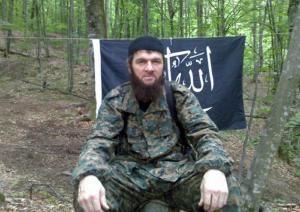
Doku Umarov
The Olympic Games in Sochi are underway, and, at least so far, the world’s worst security fears have not come true.
But the threat will lurk for the duration of the Games. This part of Russia has a well-earned reputation for being one of the planet’s most dangerous regions, because it is a uniquely poisonous cauldron of violent militant jihadi ideology, separatist guerrilla warfare and personal grudges driven by Russia’s brutal war against the Chechens.
In a series of studies conducted from 2003 to 2005 constructing psychological autopsies of 65 Chechen suicide bombers, Khapta Ahmedova, a Chechen colleague, and I found all of them to have lost a family member to a violent death at the hands of the Russians. All acted out of trauma and revenge after having been inculcated with the fanatical militant jihadi ideology that preaches Islamic “martyrdom” as a way to exit one’s life heroically while striking a lethal blow at one’s enemies.
In addition, in strong contrast to the profile of Al Qaeda terrorists that has grown familiar to Americans, many of those who pose the most serious threat to Sochi are women.
Twenty-two-year-old Ruzanna Ibragimova a Dagestani woman, pictured in wanted posters, is dressed in a modest pink hijab with a scar across her face that she is said to have gained at the hands of the Russians. Last February, Ruzanna sat alongside her rebel husband in a car when the Russians killed him. Ruzanna escaped to live. Now, trained as a suicide terrorist, she is hell-bent on death — ready to use her body as a vehicle to avenge her husband’s death.
Oksana Aslanova, also from Dagestan, is also a widow. After the Russians killed her husband, the leader of the Jamaat Sharia in Dagestan, she volunteered to go as a “martyr.” She was trained and ready to explode herself at the Day of Russia last June, according to Russian news reports, but had to be held back for another event.
She is now believed to be lurking about Sochi fully armed and ready to take on the rewards of “martyrdom” – immediate entry to paradise where she will reunite with her husband and the promise that 70 of her remaining relatives will also gain entry to paradise upon their deaths as a result of her sacrifice.
Zaira Allieva and Dzannet Tshakhaeva, also from Dagestan, are also on the loose. They were close friends with Naida Asilova, who exploded herself on a bus in Volgograd last October. The two girls fled Dagestan a week later and are now thought to be also in the Sochi region — poised to activate as suicide bombers if given the opportunity.
The organization sponsoring these four women is an outgrowth of the Chechen separatist movement begun in 1992 with the breakup of the former Soviet Union. As then-Russian President Boris Yeltsin told the former republics to “Take all the freedom you can,” Ukraine, Belarus, Uzbekistan, Kazakhstan and Kyrgyzstan did just that.
But when the Chechens, conquered so many years ago by the Russians, also tried to break free, the Russians were unwilling for those inside their own federation to let them.
Part of the reason: Chechnya has oil. So two bloody wars ensued, with Vladimir Putin carpet-bombing the capital of Grozny in the second war, causing more than half the Chechen population to flee, many becoming refugees who resettled around the world.
Then-rebel leader Shamil Basaev, seeing that the West was not coming to his aid, became convinced by a middle easterner – Ibn al-Khattab – that the only way to win was to transition the rebel movement to a terrorist campaign that explicitly embraced martyrdom and suicide terrorism.
In 2000, Basaev began a campaign of suicide attacks. Distinguishing Chechnya from many other rebellions, from the beginning, women took part in over 30 acts of terror. These included blowing up two domestic flights, exploding subways, buses, trains; it also included mass-hostage takings – one in Moscow where over 800 theatergoers were held and another in Beslan where 1,300 school teachers, mothers and children were held. In this group women have taken part in suicide acts from the start. It was women who exploded themselves on planes, and women were involved in both hostage-takings as well.
As it has metastasized over the years, the Chechen suicide terror campaign has involved more than 115 suicide bombers – half of them women. The spillover from it has spread well beyond Chechnya into neighboring Dagestan, Ingushetia and beyond.
The present terrorist leader, Doku Umarov, declared the region in 2007 as the Caucasus Emirate. In 2013, he declared that he would not allow the Russians to hold the Olympics in Sochi over the dead bones of his Muslim compatriots, the Circassians. Following the Crimean war, where, in 1859, the Russians killed and deported Circassians from the region en masse, with an estimated 625,000 deaths in what historian Walter Richmond has labeled Europe’s first genocide.
Umarov now leads an organization that has since 2000 shown itself to be capable to standing up a significant militant and terrorist campaign against Putin’s formidable authority.
Importantly for those considering the possibility of terrorist acts at the Games, the rebel forces have frequently succeeded in penetrating Russian security forces through bribes and corruption.
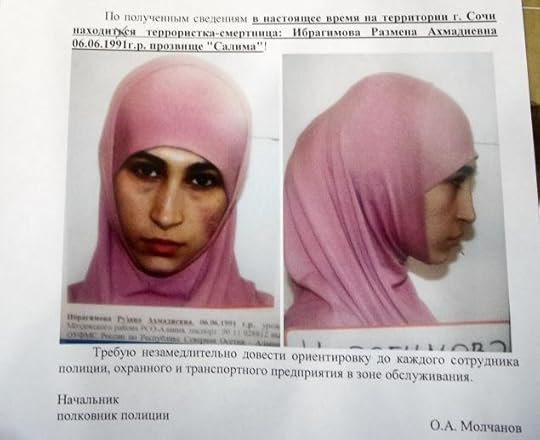
NATALYA VASILYEVA/AP
Ruzanna Ibragimova
In 2004, the Chechens embarrassed Putin by placing explosives under the review stand of then-Chechen President Akhmad Kadyrov, who was blown to smithereens while viewing a parade of Russian military force.
Similarly, the Beslan hostage takers bragged to their hostages that they had “bought” them at a small price referencing that they had bribed their way from Chechnya into North Ossetia to take over the school. The terrorists there had also managed to have a cache of weapons placed under the floorboards of the school before their arrival.
Are Umarov’s cadres capable of placing explosives under the Russian review stand at Sochi? That’s unlikely, given that the Russians would be ready for it this time. And not only are the Russians scrutinizing the Olympic venue, but multinational forces are also working alongside them on the ground. While the Russians may take bribes to turn a blind eye, the FBI and other forces won’t.
Could he and his compatriots spirit in a cache of weapons and stage a Munich-style attack on the athletes themselves? Also unlikely, given Umarov’s stated ambivalence about attacking civilians and suicide attacks after the Beslan school hostage.
After the Beslan debacle, there was a worldwide backlash to Basaev’s decision to take women and children in a school hostage. In response, Umarov declared that his group would no longer attack civilians or use suicide terrorism. Their fight, he insisted, was with the Russian forces and their desire to gain independence from Putin’s rule. He reversed that position however when the Olympics were announced, urging his followers to “do their utmost to derail” them. He’s warned foreigners to avoid the Games.
That said, Umarov knows that gunning down the athletes themselves would likely result in a similar backlash. Expect him to avoid that tactic.
But it would be worse than naïve to expect Chechen terrorists to sit out the Games entirely. When the Sochi Olympics were announced, Umarov could not resist the worldwide stage and press opportunities presented. He was no doubt additionally irritated that Putin believed he could stage the Winter Olympics with impunity in this previously Muslim-dominated area, on-as he stated, “the bones of our ancestors.” That’s why he vowed to stop the Olympics.
Now he has a worldwide stage on which to play out his desires. And, as one of the only organized resistance movements to Putin’s dismantling of democratic freedoms, he may think he can win over adherents by flexing his militant muscles in the face of a frantic Russian security apparatus.
But can’t Putin, among the world’s most powerful strongmen, detect and snuff out whatever a rebel army might be planning – especially given the unprecedented surveillance infrastructure that’s in operation at Sochi?
While more than 40,000 Russian security forces have been dispatched to guard the Olympics, those that have been shipped in from other parts of Russia lack local knowledge and contacts. They have not yet won the trust of the local population.
Umarov’s cadres, by comparison, have tight-knit cells reliant on familial and religious bonds and they have demonstrated their capability to construct explosives, train and motivate operatives and pass security checkpoints.
Their cadres do not fear death. Their motto is “Victory or paradise!” They are ready to die for their cause.
They could also receive unexpected help from abroad. As half the population of Chechnya fled the second war’s carpet bombing, many now live abroad and have European, American, Canadian and Australian passports.
They could pass into Russia on clean passports, unsuspected. Tamerlan Tsarvaev, the Boston bomber, was after all originally from Chechnya and eluded U.S. and Russian surveillance when he traveled to and from Dagestan before attacking Boston.
Whatever “special package” the terrorists have planned for the 2014 Sochi Winter Olympics, spectators can take some comfort in the fact that their security is reliant on multinational cooperation among forces that are not all subject to legendary Russian corruption. The Olympic venue itself is likely to be secure. That said, transportation hubs and places where crowds gather in Sochi itself may be vulnerable to attack.
And, in at least one small way, the terrorists have already managed to disrupt Olympic plans. Most official delegations have decreased their size, some teams are leaving their family members home and ticket sales are down. As for further disruptions, let’s hope that while our athletes go for the gold, the terrorists are unable to do anything further to upstage them.
Anne Speckhard, Ph.D. is Adjunct Associate Professor of Psychiatry at Georgetown University in the Medical School and has interviewed over four hundred terrorists, their associates and close family members and their hostages in various countries around the world. She is author of the book “Talking to Terrorists.” This piece was printed originally in the New York Daily News Opinion Section February 9, 2014 http://www.nydailynews.com/opinion/sochi-grim-reapers-article-1.1606377#ixzz2swHh4ASw







Too Young for Powerless—Cancer Through the Eyes of the Siblings
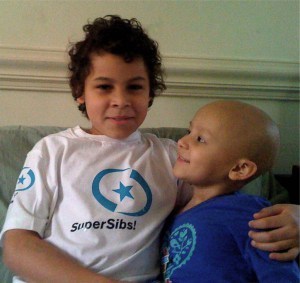
“Scary”, “hard”, and “difficult” are words that youngsters frequently use to describe the feelings they have about cancer treatment of a sibling. Watching a sibling lose weight, lose his hair, be hospitalized, etc. engenders fears of death that children left to their own devices are ill equipped to work through. Siblings also often feel guilt, powerless, loneliness, anxiety, depression, anger, and jealousy. Unable to understand what “cancer” even means—they know their sibling is sick, but they may not be able to understand why their brother or sister is getting so much extra attention, gifts, and invited to special events focused on them meanwhile their own feelings may be unintentionally discounted.
If these feelings are left unattended the sibling without cancer may end up with issues of their own. They may stumble in their academic achievement or suddenly show misbehaviors. Some siblings after the death of a sister or brother may suddenly also get “sick” often and need to stay home close to Mom or Dad—perhaps unconsciously wanting to be cared for and safe. Siblings may also have trouble at school or in social settings when adults or other children express kind sympathies (adults) or awkward questions (children) that the sibling has no idea how to respond appropriately.
During cancer treatment, or in a time of bereavement, a sibling may become super responsible and take on the role of caring for their distressed and often overwhelmed parent—a role that may be dearly appreciated during a crisis but shouldn’t be left in place for a long time afterward—as children need to be parented versus having this role reversed.
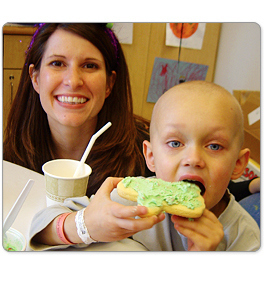 Children also want to believe that their parents are powerful versus powerless in the face of challenges and they may suddenly move into crisis finding their parents cannot prevent the suffering or death of their sibling. These feelings of fear that a parent isn’t as strong as the child hoped may lead to inexplicable outbursts of anger or blame—words that a bereaved parent may not be equipped to hear in their time of grief.
Children also want to believe that their parents are powerful versus powerless in the face of challenges and they may suddenly move into crisis finding their parents cannot prevent the suffering or death of their sibling. These feelings of fear that a parent isn’t as strong as the child hoped may lead to inexplicable outbursts of anger or blame—words that a bereaved parent may not be equipped to hear in their time of grief.
Childhood cancer, treatment, and sometimes the death of a sister or brother, are extremely challenging events for a sibling to face. When cancer strikes a child, a lot of things happen and fail to happen for the siblings at home—despite the best wishes of their parents who want all their children to thrive.
As parents support their sick child and literally engage in a life and death medical battle to save the child with cancer they may unintentionally overlook the emotional and even physical needs of their other children. Healthy children may witness the physical and emotional pain of their loved one as well as the distress of their parents—often all without a good support system around them.
Good and loving parents may be too overwhelmed to explain things properly and children who are too young to understand concepts like “cancer” and “death” may find themselves floundering in a sea of anxiety for which there are not adequate supports in or outside of the family. If the cancerous child is hospitalized out of town, parents may literally not be present to help the siblings work through their own adjustments to this very difficult challenge.
Children with cancer clearly suffer and may even die, but the overlooked siblings also suffer—from anxiety and sometimes even posttraumatic stress—with these issues displaying as nervousness, intrusive thoughts, nightmares, and avoidance which all need to be addressed—lovingly in the family or also with professional help depending on the need.
While the challenges of cancer, death, and bereavement, if the battle is lost are substantial, parents should recognize that their other children are also going to be deeply affected. They can take steps to mitigate their other children’s suffering by turning to other family members, teachers, clergy, and even professionals to ask them to offer much needed support. Siblings will need opportunities to sensitively talk with their parents and perhaps even with a grief counselor about what death means, if the cancerous child is likely to die, what the suffering is about and how to deal with a grieving and overwhelmed parents. While it isn’t easy they will ultimately need to find healthy ways to grow through and beyond this difficult time in their lives.
Anne Speckhard, Ph.D. is Adjunct Associate Professor of Psychiatry at Georgetown University Medical School. This is the second in a series of blogs for Donna Speckhard’s initiative My Truth in 365 – A Virtual Journal Project on Pediatric Cancer. Check out her site at and please donate to the cause…. http://mytruthin365.wix.com/mytruthin...








